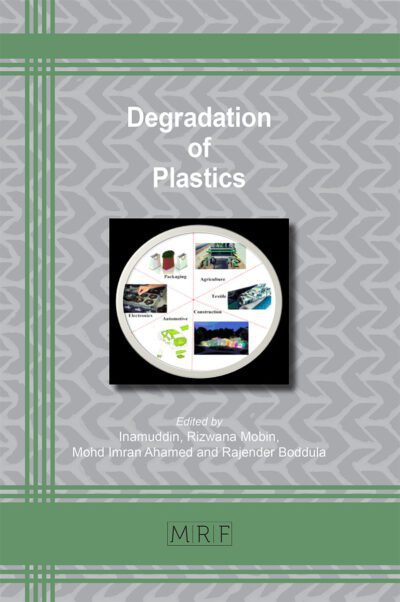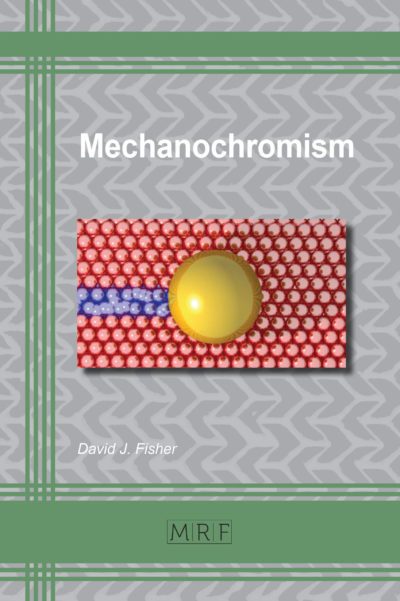Linking surface appearance to MEX processing parameters
Roberto SPINA, Nicola GURRADO
Abstract. The work investigated the influence of Material Extrusion (MEX) process parameters on the surface quality and mechanical properties of 3D printed polymers using polylactic acid (PLA) as material. The printing parameters and their correlations with surface color variations and mechanical properties were analyzed. Apparent chromatic differences were detected between parameter sets. A set with a lower material deposition time produced darker surfaces, while lighter and more homogeneous surfaces were achieved with a set with a higher material deposition time.
Keywords
Polymers, Mechanical Properties, Material Extrusion
Published online 5/7/2025, 7 pages
Copyright © 2025 by the author(s)
Published under license by Materials Research Forum LLC., Millersville PA, USA
Citation: Roberto SPINA, Nicola GURRADO, Linking surface appearance to MEX processing parameters, Materials Research Proceedings, Vol. 54, pp 2337-2343, 2025
DOI: https://doi.org/10.21741/9781644903599-252
The article was published as article 252 of the book Material Forming
![]() Content from this work may be used under the terms of the Creative Commons Attribution 3.0 license. Any further distribution of this work must maintain attribution to the author(s) and the title of the work, journal citation and DOI.
Content from this work may be used under the terms of the Creative Commons Attribution 3.0 license. Any further distribution of this work must maintain attribution to the author(s) and the title of the work, journal citation and DOI.
References
[1] K Almansoori, S Pervaiz. Effect of layer height, print speed and cell geometry on mechanical properties of marble PLA based 3D printed parts. Smart Mater. Manuf. 1 (2023) 100023. https://doi.org/10.1016/j.smmf.2023.100023
[2] C Abeykoon, P Sri-Amphorn, A Fernando. Optimization of fused deposition modeling parameters for improved PLA and ABS 3D printed structures. Int. J. Lightweight Mater. Manuf. 3 (2020) 284-297. https://doi.org/10.1016/j.ijlmm.2020.03.003
[3] F Lambiase, S Genna, C Leone. Laser finishing of 3D printed parts produced by material extrusion. Opt. Lasers Eng. 124 (2020) 105801. https://doi.org/10.1016/j.optlaseng.2019.105801
[4] A Jorda-Vilaplana et al. Surface modification of polylactic acid (PLA) by air atmospheric plasma treatment. Eur. Polym. J. 58 (2014) 23-33. https://doi.org/10.1016/j.eurpolymj.2014.06.002
[5] AP Golhin et al. Surface roughness of as‑printed polymers: a comprehensive review. Int. J. Adv. Manuf. Technol. (2023) 127:987-1043. https://doi.org/10.1007/s00170-023-11566-z.
[6] R. Spina. Performance analysis of colored PLA products with a Fused Filament Fabrication Process, Polymers. 11 (2019) 1984. https://doi.org/10.3390/polym11121984
[7] M Mani et al. Optimization of FDM 3-D printer process parameters for surface roughness and mechanical properties using PLA material. Mater. Today Proc. 66 (2022) 1926-1931. https://doi.org/ 10.1016/j.matpr.2022.05.422
[8] Y Fu et al. In situ monitoring for fused filament fabrication process: A review. Additive Manufacturing 38 (2021) 101749. https://doi.org/10.1016/j.addma.2020.101749
[9] Technical Data Sheet for Ultrafuse PLA, https://move.forward-am.com/. Last access: 11/12/2024
[10] Plastics – Determination of tensile properties – Part 2: Test conditions for molding and extrusion plastics (ISO 527-2:2012)
[11] J Steuben, D L Van Bossuyt, C J Turner. Design for Fused Filament Fabrication Additive Manufacturing. Proc. of ASME IDETC/CIE2015. https://doi.org/10.1115/DETC2015-46355
[12] J Schindelin, I Arganda-Carreras, E Frise et al. Fiji: an open-source platform for biological-image analysis. Nat. Methods. 9 (2012), 676-682. https://doi.org/10.1038/nmeth.2019
[13] Plastics – Determination of tensile properties – Part 1: General principles (ISO 527-1:2019)
[14] M Spekowius, R Spina, C Hopmann. Mesoscale simulation of the solidification process in injection moulded parts. J. Polym. Eng. 36 (2016) 563-573. https://doi.org/ 10.1515/polyeng-2014-0223














